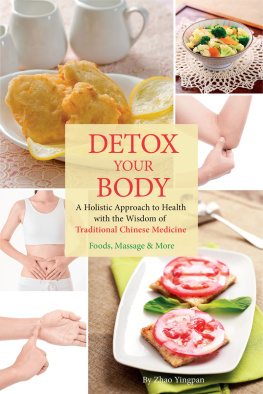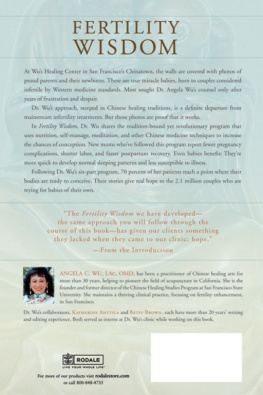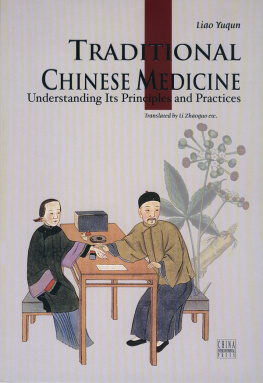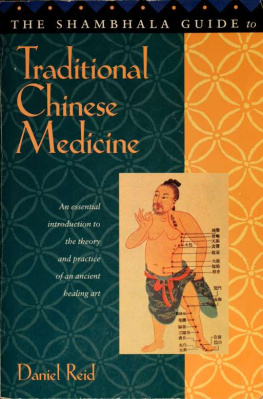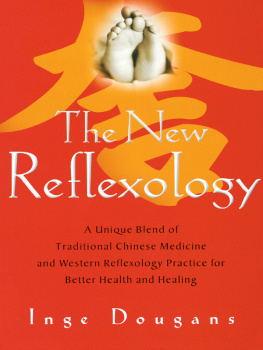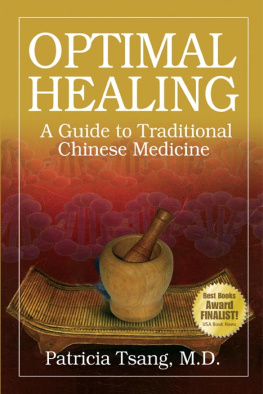
Foreword
W hen I first entered Xiaolan Zhaos clinic many years ago, I experienced a beautiful healing space where I was surrounded by care and compassion. Xiaolan gave me acupuncture and massage, and it was a wonderfully healing treatment. Since then, many of my friends, family and patients have passed through her officein fact, she is the only doctor my husband would ever go to.
Xiaolans new book, Reflections of the Moon on Water, is a labour of love that brings the healing atmosphere of her practice to the world. This enlightening and invaluable book should be at the bedside of every woman. It is a compelling look at the stages of a womans life and includes a wealth of practical suggestions for living them in harmony with natures rhythms to maintain health and prevent disease.
In Western medicine, we have medicalized the natural and healthy stages of a womans life. We over-prescribe birth control pills, hormonal medications, tranquilizers, antidepressants, and many other medications, much to the detriment of womens health. In contrast, in Chinese medicine, the stages of a womans life are honoured and celebrated. Menstruation is referred to as Heavenly Water, pregnancy is called Ripening the Fruit, postpartum is known as Golden Month, and menopause is called Second Spring. Golden Month, the prescribed period of rest following childbirth, is one of my favourite concepts in Chinese medicine. During Golden Month, the mother and babe are encircled in a cocoon of love and nurturing by their family, completely cared for day and night so that the energy depleted during childbirth can be replenished. I think there would be far less postpartum depression and sheer hardship for women in the West if at least some of these principles were adhered to.
The ancient traditions of Chinese medicine are needed more than ever in our society where women are increasingly pressured to be superwomen and are fatigued, stressed and sleep-deprived beyond endurance. And breast cancer and heart disease, autoimmune diseases in which the body attacks its own tissues, are all on the increase.
In the Chinese art of feng shui, we make our environment harmonious for the flow of Qi, or life force. Our most valuable possession, our body, the house we live in, must be put in similar balance in order to optimize our health and ensure a healthy and vibrant Second Spring. This book will enable you to care for and thoroughly enjoy the body that youre in.
Carolyn DeMarco, MD
Author of Take Charge of Your Body: Womens Health Advisor

Introduction
I n 1986, I was working as a general surgeon in the emergency department of the biggest hospital in the city of Kunming, China, when a twenty-four-year-old woman named Jiayu was rushed in. She was vomiting bright red blood, and from its colour I assumed it was coming from a hemorrhage in her upper digestive tract. I, together with my medical team, operated immediately, but could not find the source of the bleeding. Three hours later, Jiayu was again throwing up blood.
Mystified and concerned, we consulted the chairman, the head doctor of the hospital. He thought we should again do exploratory surgery but this time to look farther down for the hemorrhage, to the small intestine, pancreas and gallbladder. An hour or two into the operation, using all the medical technology at our disposal, we still could not locate the source of Jiayus bleeding. Everyone was shocked. Wed successfully performed countless abdominal surgeries to treat acute conditions, but this time we were at a loss. Within a matter of hours, Jiayu was again vomiting blood.
We decided to call an emergency meeting with the hospitals top surgeons. All five were at home sleeping in their beds when the nurse called them, since it was the middle of the night. But they soon arrived at the hospital and quickly changed into their surgical clothes. Together we operated for the third time, carefully looking everywhere wed already looked. But there was no wound, no internal bleedingeverything looked clean. Approximately twenty-four hours had passed since Jiayu had been admitted, and we were no closer to understanding why she was vomiting blood. We felt helpless.
Jiayus family had remained at the hospital the entire time, and to this day, I can still remember her husband, who was understandably distraught, unable to stand up or articulate a thought. All he could do was sob out his love for his wife. Hope was fading for him and their beautiful eight-month-old daughter. The chairman of the hospital looked at me and said, Xiaolan, do whatever you think may help. Shes almost gone. He knew that I was also a doctor of Traditional Chinese Medicine (TCM) and was asking me to use anything from that knowledge to save Jiayu.
I had studied several traditional Chinese herbal formulas that were supposed to be effective in stopping hemorrhaging. One in particular, called the Yellow Earth Formula, came to mind. I went to my office and looked up the formula in a reference book. I gave Jiayus family the list of ingredients and instructions. They would have to prepare the remedy at home and bring it to the hospital, since we had no facilities for cooking herbs. Within four hours they returned with the herbal remedy.
By now, Jiayu had lost so much blood she was unconscious and extremely weak. She was alive only because of the intravenous fluids and blood transfusions we had given her. We administered the herbs through a tube in her nose and waited. Two hours passed and she did not vomit. Three hours passed, then six hours, then twelve turned into twenty-four. Something in the herbal formula had stopped the bleeding.
For me, this experience was an incredibly powerful demonstration of the effectiveness of TCM. Previously, I had witnessed herbs releasing symptoms of a cold, or acupuncture relieving sinus problems, or Tui Na (Chinese massage) alleviating back pain. But Id never witnessed Chinese medicine saving someones life in an emergency situation in which Western medicine had failed. I had been educated in medical school, in the rational world of evidence-based science. I based my thinking on one plus one equals two, and believed that problems had solutions that could be logically figured out. But the effectiveness of the Yellow Earth formula could not be explained by Western medicine. On top of this, the cause of Jiayus bleeding remained a mystery. We never found the source of the hemorrhaging.
Biases come into play when we seek to understand TCM through the eyes of Western medicine. The development of TCM began more than 5,000 years ago, 4,500 years before the scientific traditions of the West, in a culture with a unique view of the world and that forbade human dissection. Ancient practitioners had to rely on their powers of observation and trial and error to develop a medical system and terminology. As a result, they had a different understanding of the body and disease than we do in the West. But after centuries of assessment and evaluation, TCM has withstood the test of time. It is still an integral part of the health-care system in China and is practised alongside Western medicine in many hospitals. Indeed, doctors of Western medicine and of TCM receive the same amount of education and training and are equally respected. People seek out either Western or Chinese medicine, depending on the nature of their illness. For acute problems such as heart attacks, theyll go to a hospital emergency department for Western-style health care. For chronic conditions, such as arthritis or migraine headaches, they will usually consult a TCM practitioner. Each discipline has its own particular strengths, so combining the two can work very well. Doctors of Western medicine will often invite a TCM practitioner to consult on a particular case, and vice versa.


